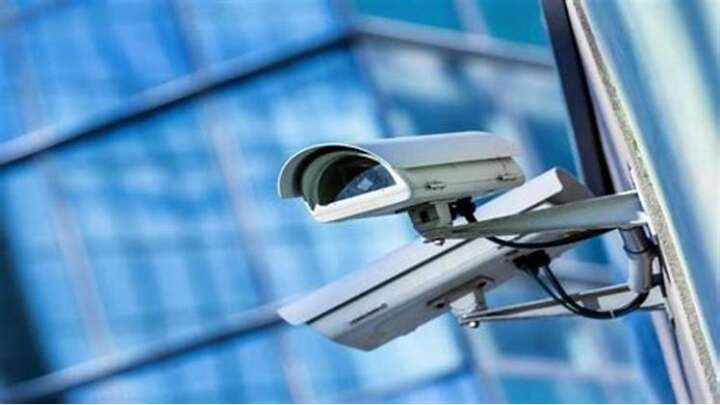In today’s digital world, forensic video analysis has become a crucial tool in criminal investigations. With the rapid advancements in technology, such as the use of Cognitech’s forensic software and the introduction of the 64-image technique, law enforcement agencies can extract critical details from video footage that were previously beyond the realm of possibility.
What is Forensic Video Analysis?
Forensic video analysis refers to the process of extracting, enhancing, and analyzing video evidence for use in legal proceedings. The purpose of this analysis is to clarify what happened in a given video and to extract actionable data such as identifying suspects, verifying alibis, or revealing new angles of a crime scene. Unlike traditional video editing, forensic video analysis goes beyond basic enhancements by incorporating scientific methodologies and software tools designed for accuracy and reliability.
The Role of 64-Image Technology in Forensic Video Analysis
One of the key advancements in forensic video analysis is the use of 64-image technology. This method allows forensic experts to process and analyze video frames with greater detail than ever before. By using 64 images within a single sequence, forensic analysts can track subtle motion patterns and enhance the quality of footage without losing important data.
64-image technology is particularly beneficial for analyzing low-resolution or poor-quality footage, such as surveillance videos from security cameras. While these videos are often grainy and unclear, the use of 64 images enables analysts to improve the clarity of specific areas within the video, such as faces, vehicles, or license plates.
Key Features of Cognitech Forensic Software
Cognitech’s forensic software provides a powerful suite of tools designed to streamline the video analysis process. From stabilizing shaky footage to isolating specific objects within a scene, Cognitech’s software offers several features that make it an invaluable resource for law enforcement and forensic professionals.
-
Enhanced Image Processing: Using sophisticated algorithms, Cognitech software enhances the clarity of video footage by applying various techniques such as deblurring and contrast enhancement. The 64-image technology significantly improves the ability to extract details from challenging video sources.
-
Motion Tracking: Cognitech’s motion tracking capabilities allow analysts to track the movement of objects or individuals across multiple frames. This is especially important in cases where key events unfold over time, such as identifying a suspect in a crowd or following the movement of a vehicle.
-
Time-Sequence Analysis: The software can analyze time-sequenced video data, comparing frames to detect changes in the scene. This process is vital in criminal investigations, particularly when determining the exact timing of an incident or confirming the sequence of events.
-
Object Identification: Cognitech’s software utilizes object recognition techniques to identify specific items in video footage. This can include identifying weapons, bags, or other objects that may be central to an investigation.
Case Study: Solving a Crime Using Forensic Video and 64-Image Technology
In a recent case, forensic video analysis played a pivotal role in solving a complex crime. The footage captured by a convenience store’s surveillance camera was initially too blurry to provide any valuable information. However, after applying Cognitech’s 64-image technology, forensic experts were able to enhance the footage, focusing on the suspect’s movements and capturing previously invisible details.
By analyzing the enhanced video, law enforcement was able to identify the suspect’s vehicle, their distinctive clothing, and even a unique tattoo on their arm. The use of 64-image technology provided the breakthrough the investigation needed to bring the perpetrator to justice.
Common Challenges in Forensic Video Analysis
While forensic video analysis has made significant strides in recent years, it still faces several challenges. One of the main hurdles is the quality of the original footage. Many surveillance videos are recorded in low resolution or poor lighting conditions, making it difficult to extract useful information. However, with advancements in forensic software like Cognitech, even low-quality videos can be enhanced to reveal crucial details.
Another challenge is ensuring the integrity of the video evidence. Forensic experts must ensure that the footage has not been tampered with, as altered videos can lead to incorrect conclusions or compromise the integrity of the case. Cognitech’s forensic software includes tools for validating the authenticity of video files, ensuring that they can be used as reliable evidence in court.
Legal Considerations in Forensic Video Analysis
Forensic video analysis must adhere to strict legal standards to ensure that the evidence is admissible in court. This includes maintaining a clear chain of custody for the video files and ensuring that the analysis process is transparent and reproducible. Forensic experts must also be able to testify to the methods used in their analysis and demonstrate that the results are scientifically valid.
In many cases, the use of 64-image technology and other forensic video tools can provide strong supporting evidence, but the ultimate decision on whether the evidence is admissible rests with the court. Legal professionals must be aware of the complexities involved in video analysis and work closely with forensic experts to ensure that all procedures are followed correctly.
Conclusion
Forensic video analysis has revolutionized the way law enforcement agencies approach investigations, and the introduction of 64-image technology has further enhanced the ability to extract critical information from video footage. Tools like Cognitech’s forensic software provide analysts with the ability to enhance, track, and identify objects in video footage, even when the original quality is subpar. However, despite these advancements, forensic video analysis still faces challenges, particularly in terms of video quality and maintaining the integrity of evidence.
As technology continues to evolve, it is likely that forensic video analysis will play an even more prominent role in solving crimes and bringing justice to those affected. Whether it’s improving the quality of surveillance footage or providing key evidence in a trial, forensic video analysis has proven itself to be an invaluable tool in the pursuit of truth.

